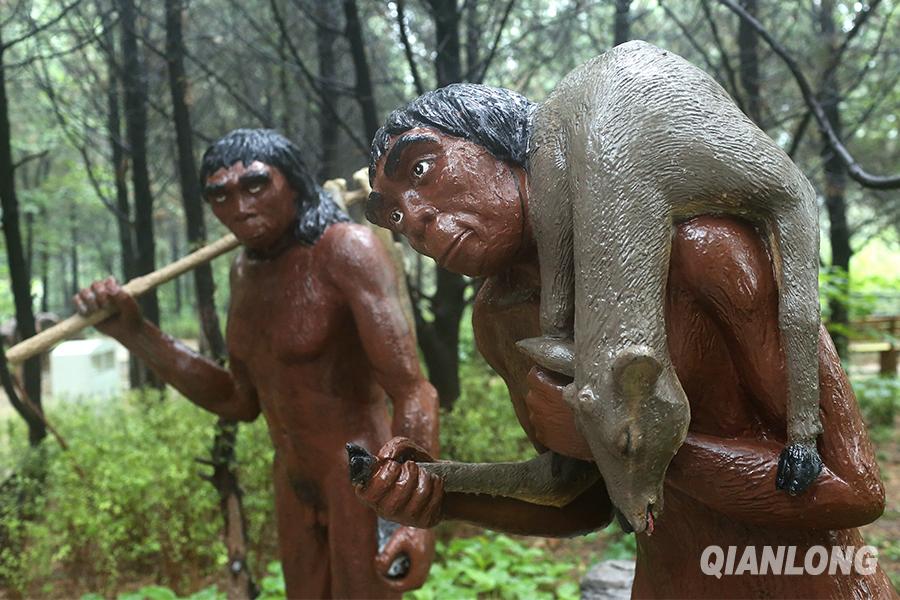

Brief Introduction
An important Paleolithic site had been excavated first in 1927 in a cave on Dragon Bone Hill at Zhoukoudian, southwest Beijing. In 1929, skull fossils of Peking Man were discovered, providing evidence for the existence of primitive man, and marking a milestone for the history of paleo-anthropology. Six skulls, 15 pieces of lower jawbones, 157 teeth and numerous other bone segments from the bodies of about 40 humans were excavated, to provide data for the study of the evolution of pre-historic biology and development of pre-historic culture.
The study of geological strata indicates that Peking Man lived about 700, 000 to 200,000 years ago. The average brain volume of these primitive people was 1,088 ml (the average for modern people is 1,400 ml), and is estimated that the average height reached 156 cm for males and 150 cm for females.
Peking Man was among the first human beings to learn how to use fire, and could hunt large animals. The average life expectancy was short, which estimated that 68.2% of them died by the age of 14, and only 4.5% lived to older than 50-years old.
Fossils of primitive men living 20,000 years ago were excavated in 1930 near the top of Dragon Bone Hill, and were named Upper Cave Man fossils. In 1973, fossils of New Cave Man were discovered. New Cave Man is believed to have lived in the period between Peking Man and Upper cave Man.
 |
|
Models of Peking Man returning from hunting is seen at Zhoukoudian in Beiing's Fangshan district. [Photo by Wang Zibin/Qianlong.com] |